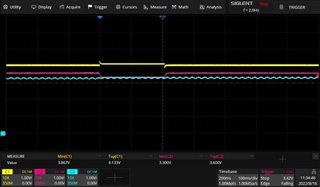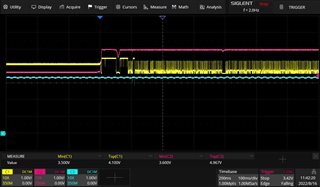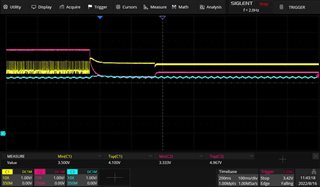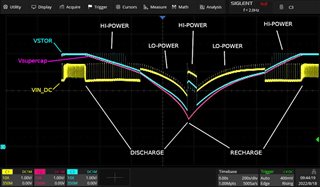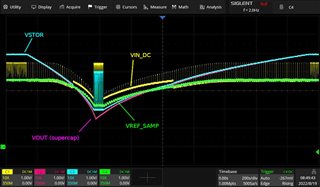Dear E2E Forum,
I have some questions about an unusual behavior of the BQ25570 energy harvesting IC. I've been trying to use this IC as a supercap charger according to an article by Mr. Yogesh Ramadass, but I noticed that it isn't tracking the solar panel maximum power point properly. I've managed to narrow the issue down to the input boost charger itself. The supercap was disconnected so the buck wasn't used at all. Instead, a 50Ω potentiometer was added directly between the VSTOR pin and GND to simulate a resistive load.
Solar panel when fully illuminated (noon sun, clear sky):
Voc = 4.5V
Isc = 142 mA
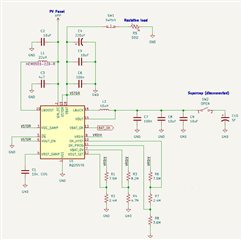
With VOC_SAMP pin connected to VSTOR according to datasheet (although I'm baffled why this pin must be connected to VSTOR rather than VIN_DC), the IC should regulate it's input voltage to 80% of the Voc (which is about 3.6V in this case). Instead, when I tested the circuit and lowered the resistance on the trimpot, the voltage on VIN_DC was at 4.1V and the circuit was drawing about 74 mA from the solar panel (303.4 mW). Voltage on VSTOR pin was a stable 3.52V, and the potentiometer was drawing about 65 mA (228.8 mW) at 75.4% efficiency. I'm not sure what's going on here i.e. why is the IC preferring this lower efficiency voltage on the input over the 80% of Voc it was programmed to.
Funny thing I noticed is that whenever I disconnected the trimpot for a moment (SW1 on schematics) the input voltage (VIN_DC from PV module) would temporarily fall down to 3.5V and draw 123 mA (430.5 mW) from the PV. This was much closer to the PV maximum power point, and the power drawn is appropriately higher. Voltage on VSTOR was now 4.6V, and the dummy load drew 85 mA (391 mW) at 90.8% efficiency. This however only lasts until the clock runs out on the IC's internal 16 second MPPT timer. After a re-sampling of the Voc on the CREF cap (I see a short 230ms spike on VIN_DC on the scope) the voltage jumps back to 4.1V. The VSTOR voltage is programmed to 5V, so clearly it still has some room to boost to a higher level and draw more power from the PV panel.
Thoughts?


